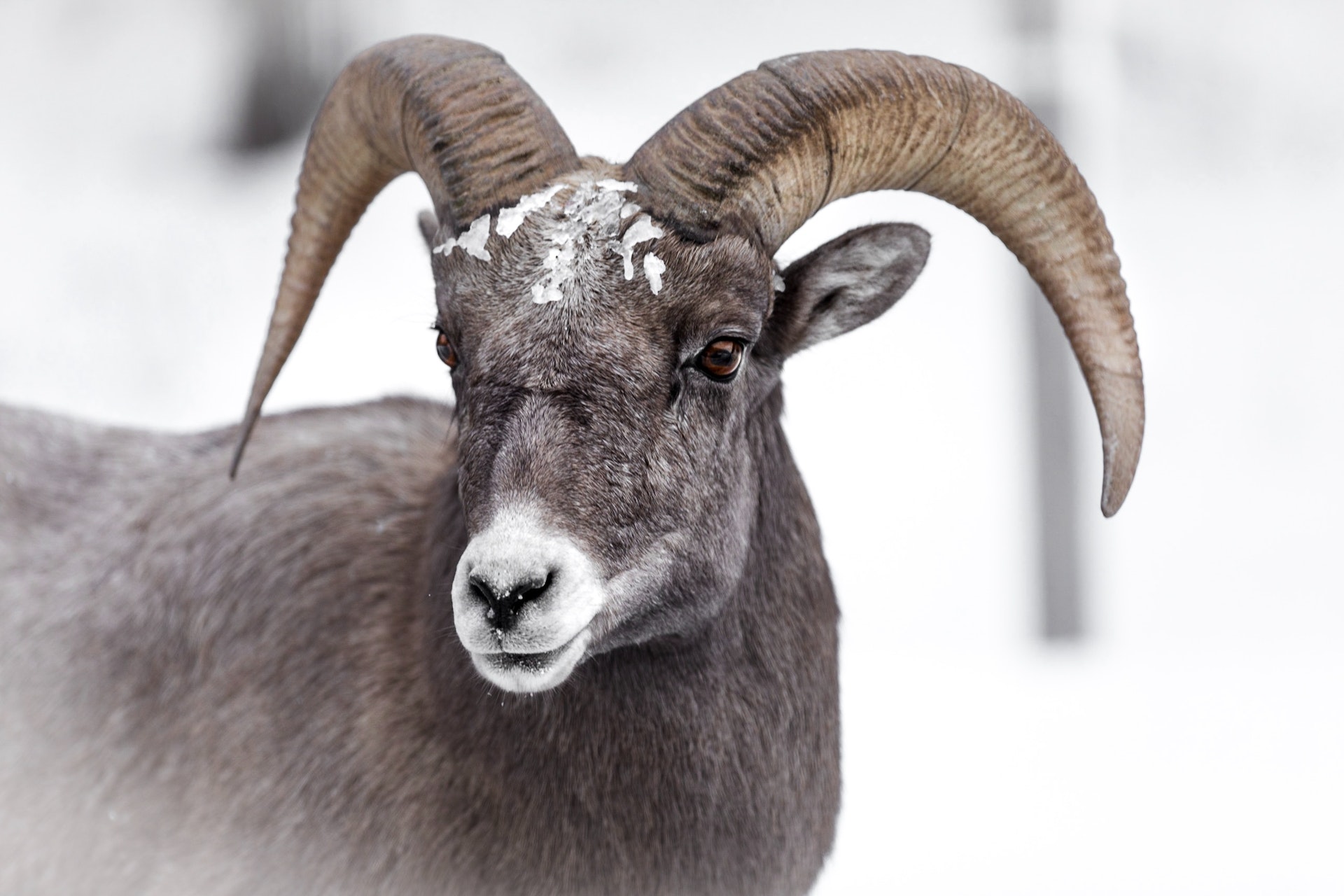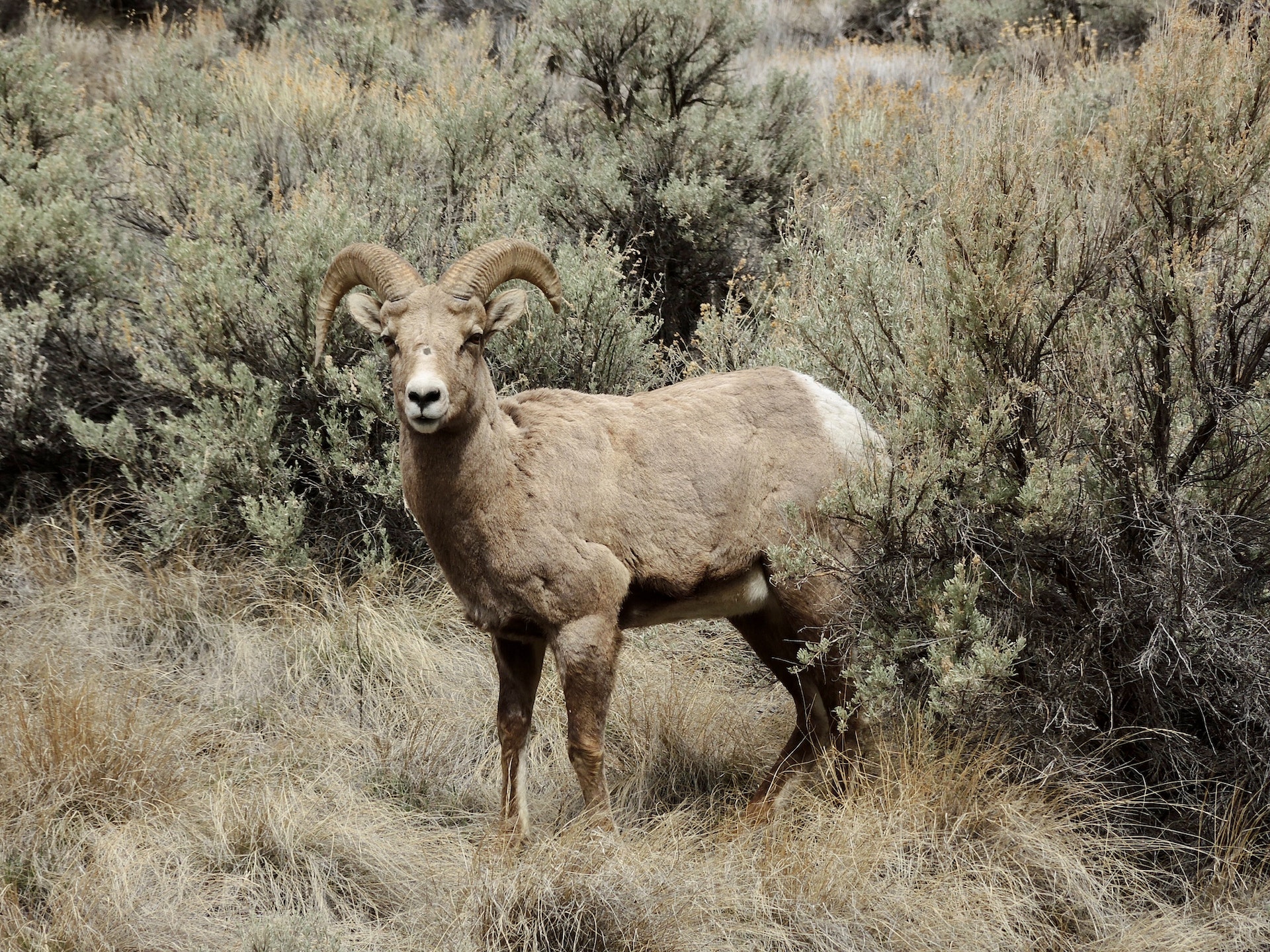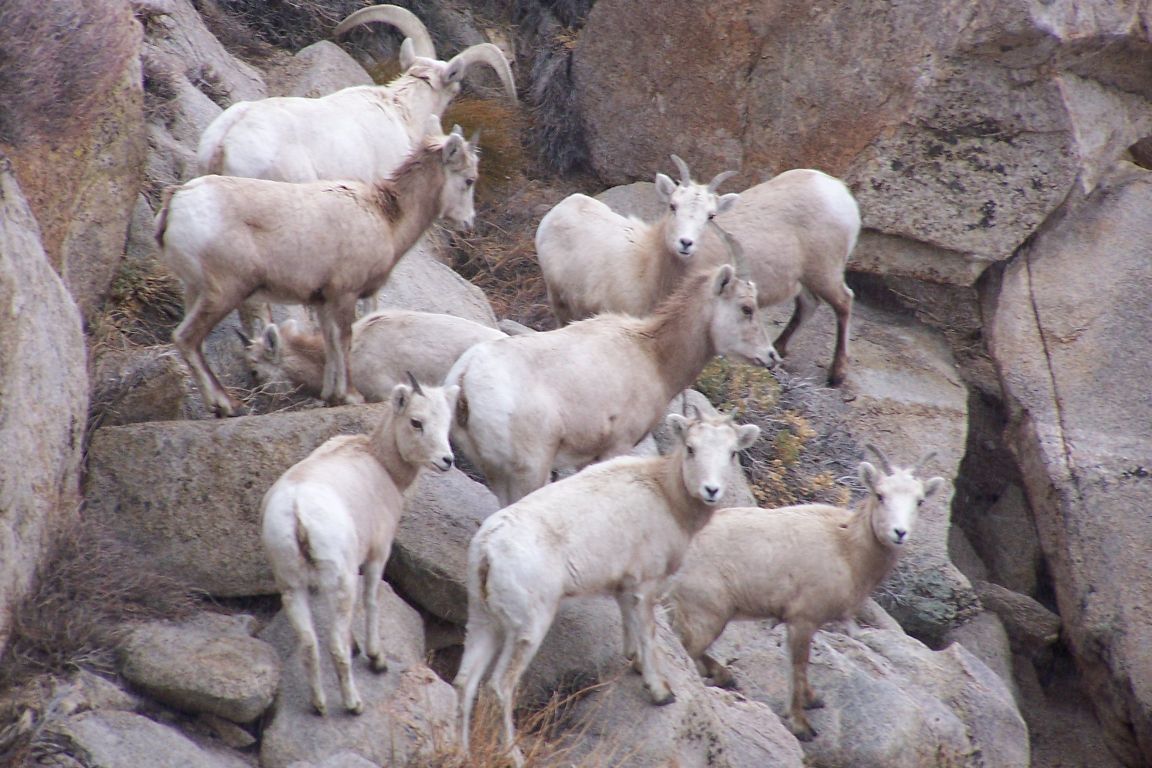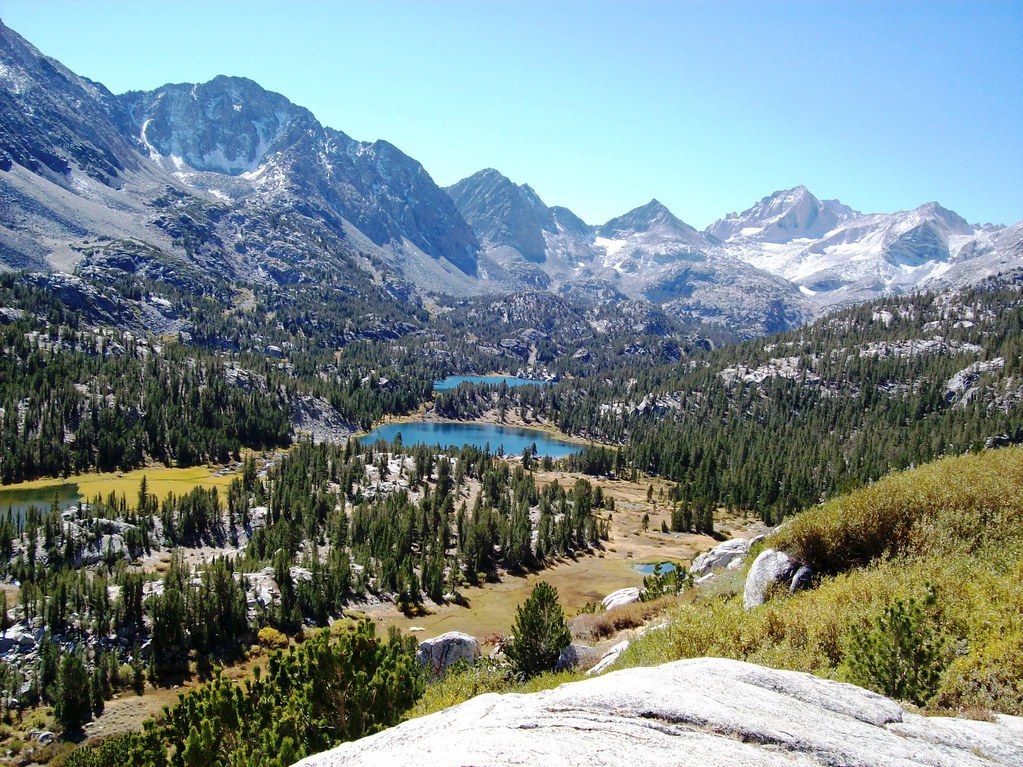Sierra Nevada bighorn sheep are some of our area’s most elusive—and endangered—animals. So, seeing one for yourself is always considered a special, perhaps even once-in-a-lifetime, event.
In this Mammoth Lakes Wildlife Highlight, we’ll talk about what makes these animals so unique and what is being done to make sure they don’t disappear from the Eastern Sierra forever.
All about ovis canadensis sierrae

Bighorn sheep are a species of wild sheep that live in social herds in mountain ranges. They can vary in size between 160 and 250 lbs and typically reach a height of 3 feet at the shoulder. Bighorns thrive in the areas that are least accessible to most predators, ranging from around 4,000 ft in the winter to above 10,000 ft in the summer.
Sierra bighorns, ovis canadensis sierrae, are one of three subspecies of bighorn sheep along with Rocky Mountain bighorn and desert bighorn. These spectacular animals exist only in the Sierra Nevada range, and have a few key differences from their close relatives.
In a herd of Rocky Mountain bighorn, all of the members are likely to have a similarly light brown coat. Our Sierra bighorns, on the other hand, can range in color from rich brown to cream.
Another way to differentiate a Sierra bighorn from the Rocky Mountain or desert subspecies is to look at the horns. Sierra bighorns have slightly smaller horns than their relatives and they curve away from the head instead of tightly curled around the face.
What are horns, anyway?
If you caught our Mammoth Lakes Wildlife Highlight on Mule Deer, you’ll remember that our cervidae friends shed their antlers every year once the breeding season is done. Is the same true for wild sheep?
No! While antlers can be shed and regrown every year, horns are for life! And, the older and healthier a ram, the bigger his horns will be.
Antlers and horns are also made from different materials. Antlers consist entirely of bone, while horns have a bone core surrounded by a tough keratin outer later. In fact, this extra layer of protection makes horns even stronger than antlers, which keeps the rams safe during their head-butting mating season. Like we said, horns can’t be regrown, so they have to be fracture-proof instead!
What is up with the head butting?
Many hoofed animals, including bighorn sheep, moose, and wildebeest, use their horns or antlers to challenge one another during the breeding season. But bighorn sheep take this practice to the extreme!
One single blow from a bighorn sheep is around 764 pounds of force, more than any other sheep species. During the “rut,” males receive these powerful blows over and over for days on end. And as we mentioned, their horns are specially designed not to crack or chip under the impact.
Why are Sierra bighorns so rare?
There are a few reasons why so few people who travel to Mammoth Lakes can say that they have seen a bighorn.
One is that they’re simply amazing at camouflage. Their coloring and ridged horns allow them to blend into a variety of backdrops, including granite cliffs, sagebrush covered hillsides, and bouldery areas.

Another reason is that they’re true high altitude lovers. In the summer, you need to be willing to huff and puff your way up to their territory, and to be honest, they’ll probably see you coming!
Finally, bighorns are elusive because they’re endangered. While bighorns are believed to have once thrived in the Sierra Nevada range, the introduction of domestic sheep in the 1800s had a devastating impact on the wild population. Many contracted diseases from the domestic livestock and were forced out of their natural range to make way for herds of goats and sheep. Uncontrolled hunting also played a huge role in the decline of the subspecies.
By the end of the 20th century, the population of Sierra bighorns had fallen to just over 100 individuals and were considered to be facing imminent extinction. Luckily, this harrowing fact jumpstarted a conservation effort to save the Sierra bighorns.
What is being done to help the bighorn population recover?
Sierra bighorn recovery is a multi-pronged effort. One one hand, there is a team of researchers tasked with tagging and surveying bighorns so that we can see any changes in population or behavior.
There’s also been an effort to bolster Sierra herds with translocation, or moving sheep around to different herds in order to promote genetic diversity.

Connecting traditional migratory routes is another way to help protect bighorn sheep. By working with local farmers and landowners to create safe and intuitive passageways, the bighorn will face fewer obstacles during their yearly migrations.
A huge part of the bighorn conservation effort has been to control the impact of natural predation. And this part of the plan has been, at times, controversial. In 2021, the California Department of Fish and Wildlife relocated two mountain lions to the Mojave Desert in an effort to protect the bighorn herd. The mountain lions later died of starvation trying to make their way back to their home range. As shocked as the public was to learn about this situation, the reality is that the relocation was actually attempted as an alternative to immediate euthanasia, which is often the first option in protecting the bighorn herds.
But, despite the controversy, it’s clear that the Sierra bighorns still need a lot of help. Their numbers were on the rise as of 2015, but have since declined again to below 300 individuals because of harsh winters and a growing puma population.
Where are your best chances of seeing a bighorn sheep in Mammoth Lakes?
Want to see one of these majestic creatures during your next trip to Mammoth Lakes? Even though it’s never guaranteed, you can increase your chances by:
-
Timing your trip. Fall is one of the best times to see Sierra bighorns as they start coming down from their high alpine summer ranges. Of course, you’ll want to schedule your trip before the snow starts, so September and October are ideal.
-
Being willing to hike. Even when bighorns have reached their lower elevation winter range, you still won’t find them below 7,000 ft. So, get ready to climb! The Little Lakes Valley Trail is a great place to look for bighorn sheep.

-
Packing your binoculars or spotting scope. When you look for bighorn sheep, there’s very little chance you’ll ever get close to the herd. Instead, bring a pair of good binoculars or a spotting scope to get a closer look from afar.
-
Training your eye on movement. As we mentioned, Sierra bighorns are masters at blending in. If you see movement in your peripheral vision, always stop and take a closer look!
-
Listening up. Mating season, or “rutting” takes place from late summer to early winter and one of the best ways to spot a herd is by listening for the impressive crack of their head-butting.
-
Being patient. Don’t feel bad if you don’t see a bighorn herd during your first or subsequent trips to Mammoth. These amazing animals are not easy to spot, which makes it all the more special to see one if you ever get the chance!
Now is the perfect time to look for Sierra bighorns before autumn is over! Book a condo with Mammoth Mountain Reservations so you can start the search for this stunning species.
